
PR
Water is fearful, but water is precious.
Ancient shrine located in the narrow mountains of Kurama Kibune-cho, Sakyo-ku, Kyoto City.Kifune ShrineThe first time I saw it, I was surprised to learn that it had been built in the same year. When I looked up its history on its official website, these words jumped out at me. "Floods are terrible, but without water, life cannot be sustained. The reason why the capital has been located in Kyoto, a land of mountains and clear waters, for more than 1,000 years is probably because this land is blessed with abundant and delicious water."
Kyoto is the city of the four gods. The Kamo River runs north to south on the eastern side of the city, which is the blue dragon. The main shrine of Kibune Shrine, located upstream of the Kamo River, enshrines the deity Takanokami-no-kami, the deity Banchohime, the deity Takanokami-no-kami, the deity Kuraokami-no-kami, and the deity Tamayorihime. Since ancient times, the deity has been worshipped as the god of water, who brings rain in times of drought and sunshine in times of long rains. Takagamijin is the dragon god of the mountain tops, while Yamiagami is the dragon god of the dark valley floor.
ancient timesKibune" is the root from which the energy of all things arises.In the sense that,"Ai Sheng Root."He also wrote It is said that a visit to this place will give you energy and improve your luck, and worshippers have been coming here since ancient times. Kyoto has been experiencing a heat wave every day, and when you hear that the maximum temperature is 35°C, you may think it is cooler than it is. In the midst of feeling physically and mentally exhausted, I visited Kibune in the early morning, hoping to receive the energy of "Ki-sei ne" (energy of vitality).
Due to torrential rains in July, the Eizan Electric Railway had to turn back its train from Ichihara and could not reach Kibune-guchi, so we took a bus. From Kibune-guchi, we walked along the Kibune River for 30 minutes amid the sound of water and sweltering greenery. We walked up the stone steps to the main shrine, which was beautifully decorated with green and vermilion lanterns, and first visited the main shrine.
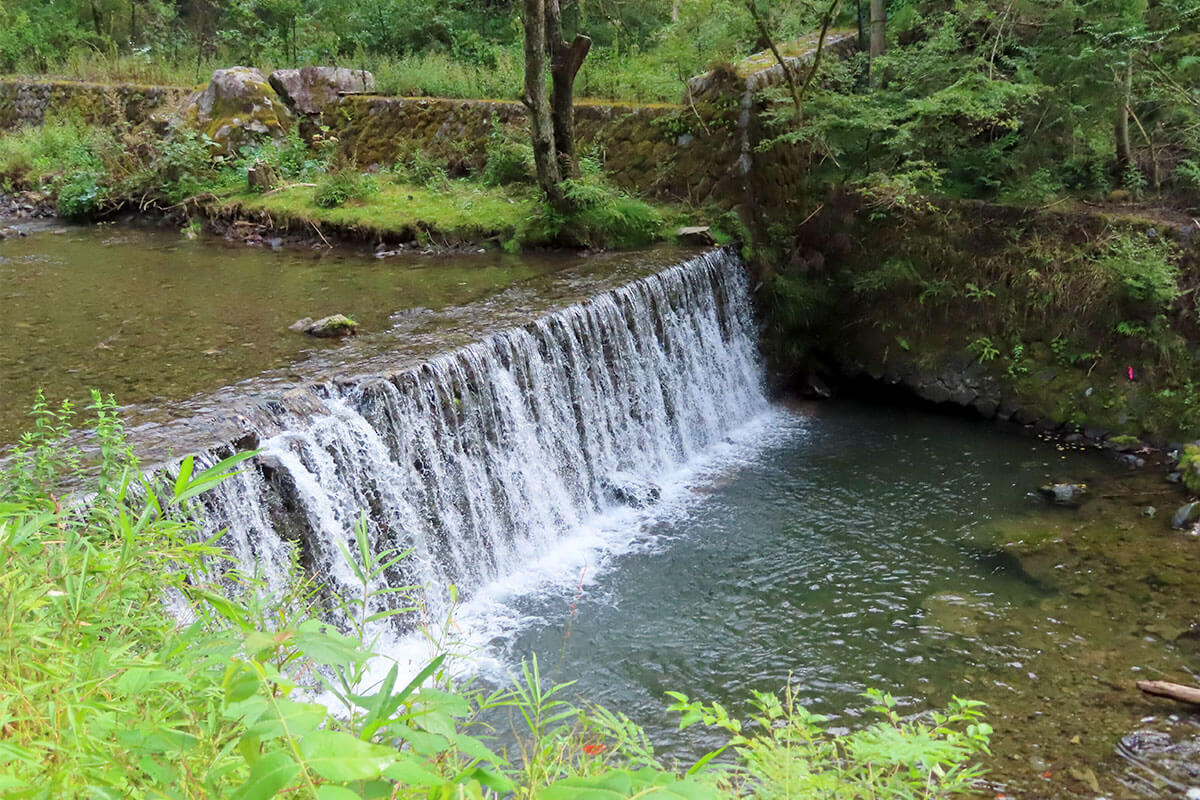
The cool and refreshing flow of the Kibune River
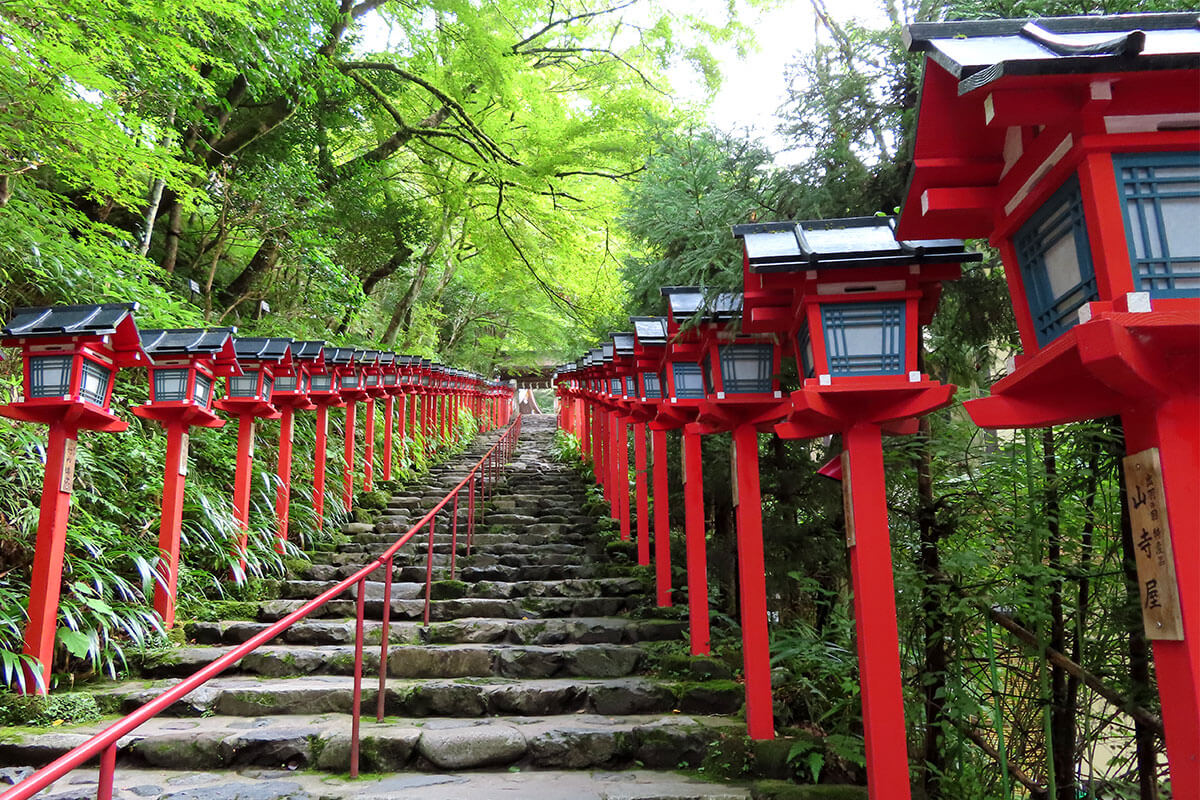
Lantern-lined approach to the main shrine of Kibune Shrine
Afterwards, I tried to draw a "water fortune-telling" omikuji. When the omikuji is floated in water, the characters appear. When I dipped the omikuji into the sacred water, the letters appeared, which was very mysterious. The one that came up was "Chukichi" (medium good luck). I thought it was better than "Daikichi," as there was room for more luck in the future, and followed the instructions to tie the omikuji and head for the shrine.
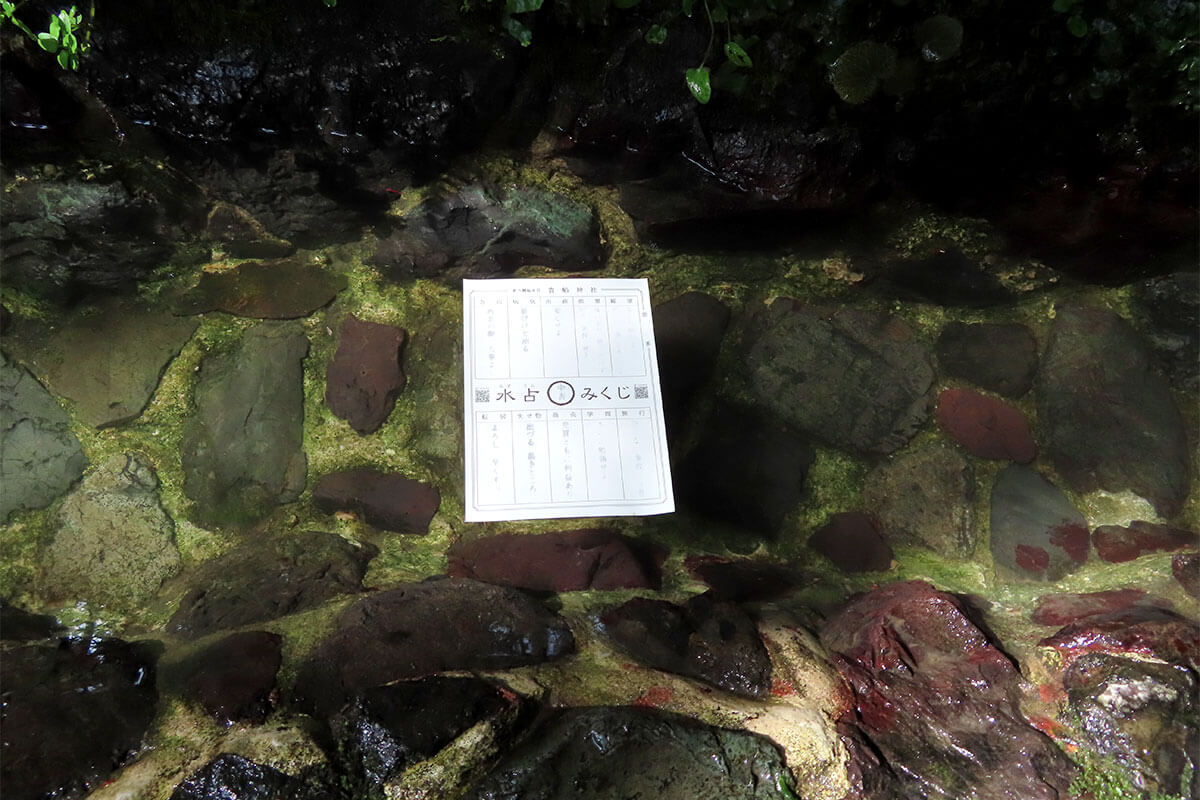
Water divination floating on the sacred water
The shrine is said to bring good luck in marriage, and there is a monument to a poem by Izumishikibu, a poet of the Heian period (794-1185). Izumishikibu is known to have made a pilgrimage to Kibune to win back her husband's heart. In the precincts of the shrine, a 3.3-meter-long heavenly rock boat, which is said to have come from Mt. From here, we went further from the Yusha to the Okumiya Shrine.
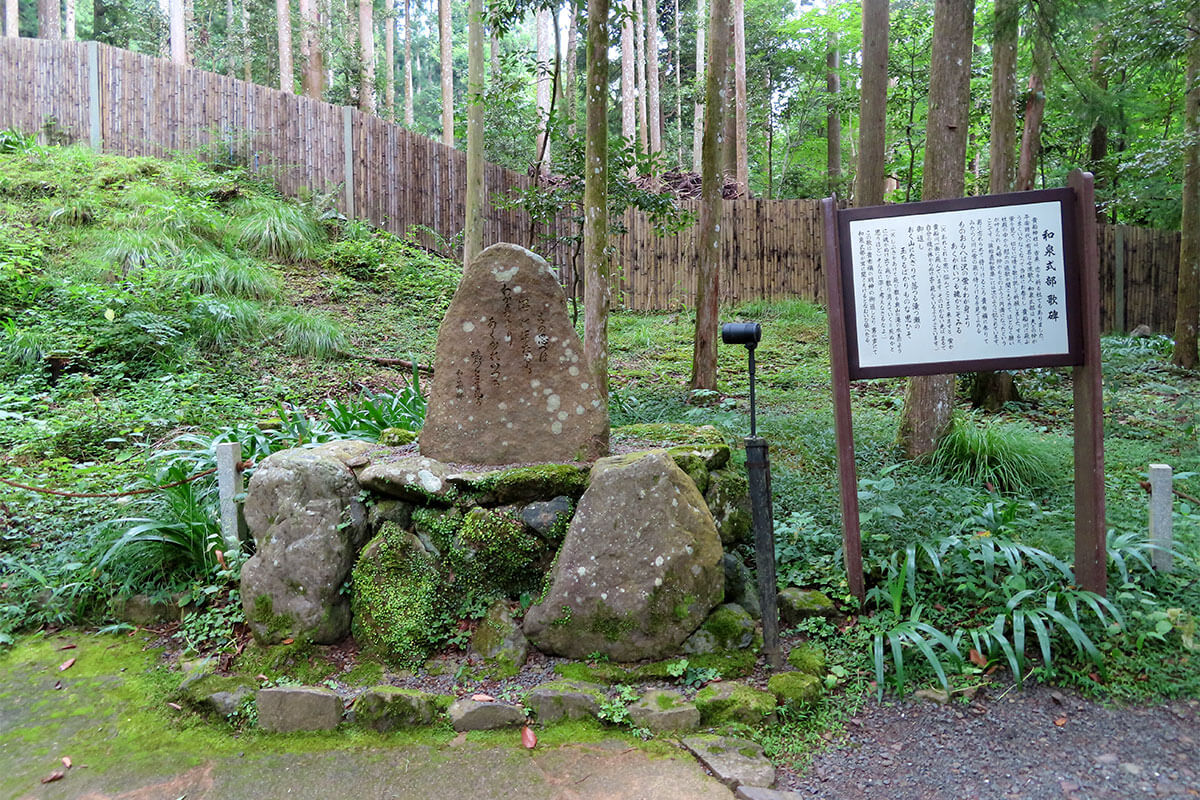
Izumishikibu's poem monument at Yusha
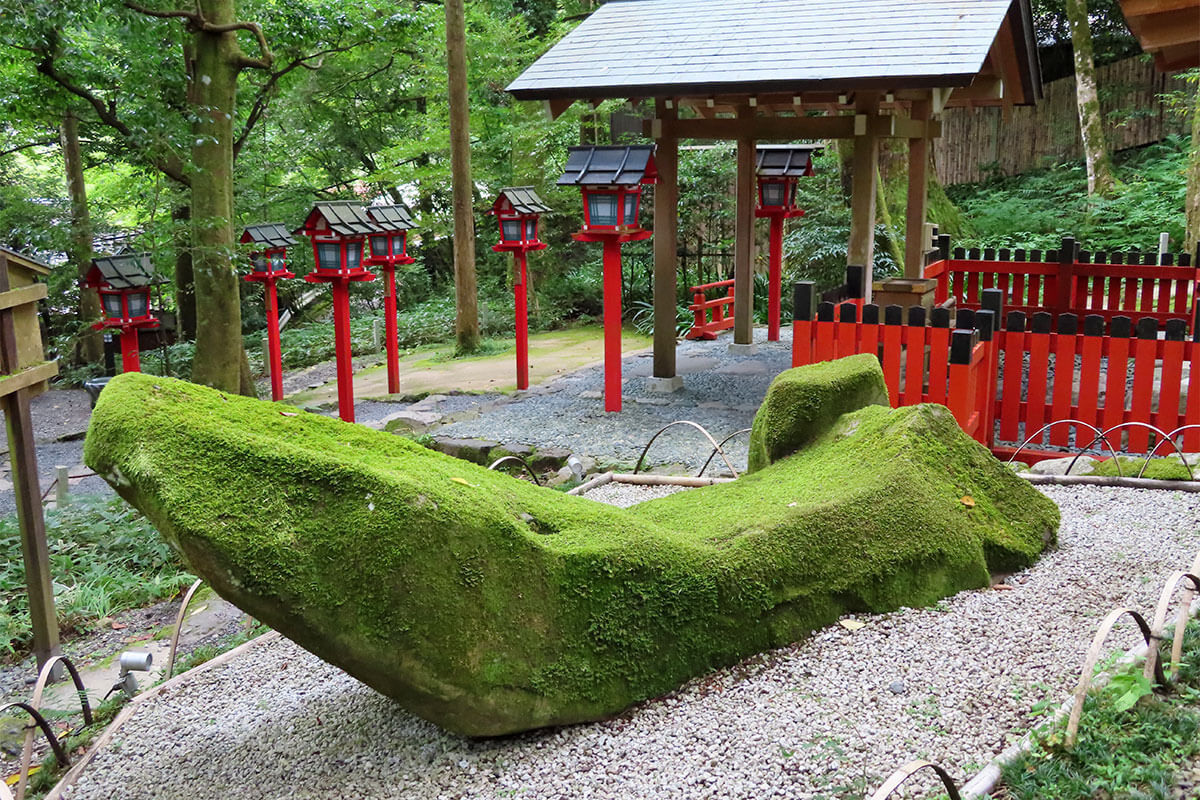 Heavenly Rock Boat at Yusha
Heavenly Rock Boat at Yusha
The main shrine of Okumiya is enshrined at the back of the spacious precincts. There were no worshippers, and the place was quiet. My body temperature seemed to have dropped by about 3 degrees Celsius. My arms were covered with goose bumps. Perhaps it was because I had been thinking that this was the site of the famous Ushi-no-Morimori ritual, which I had previously introduced in my articles on "Hashi-hime" and "Kannawa-no-i" (well of the iron ring). In the Ushi-no-koromisai, a person is said to curse his or her partner by striking a straw doll against a tree, but it is said that if the person is seen doing so, it will not be fulfilled.
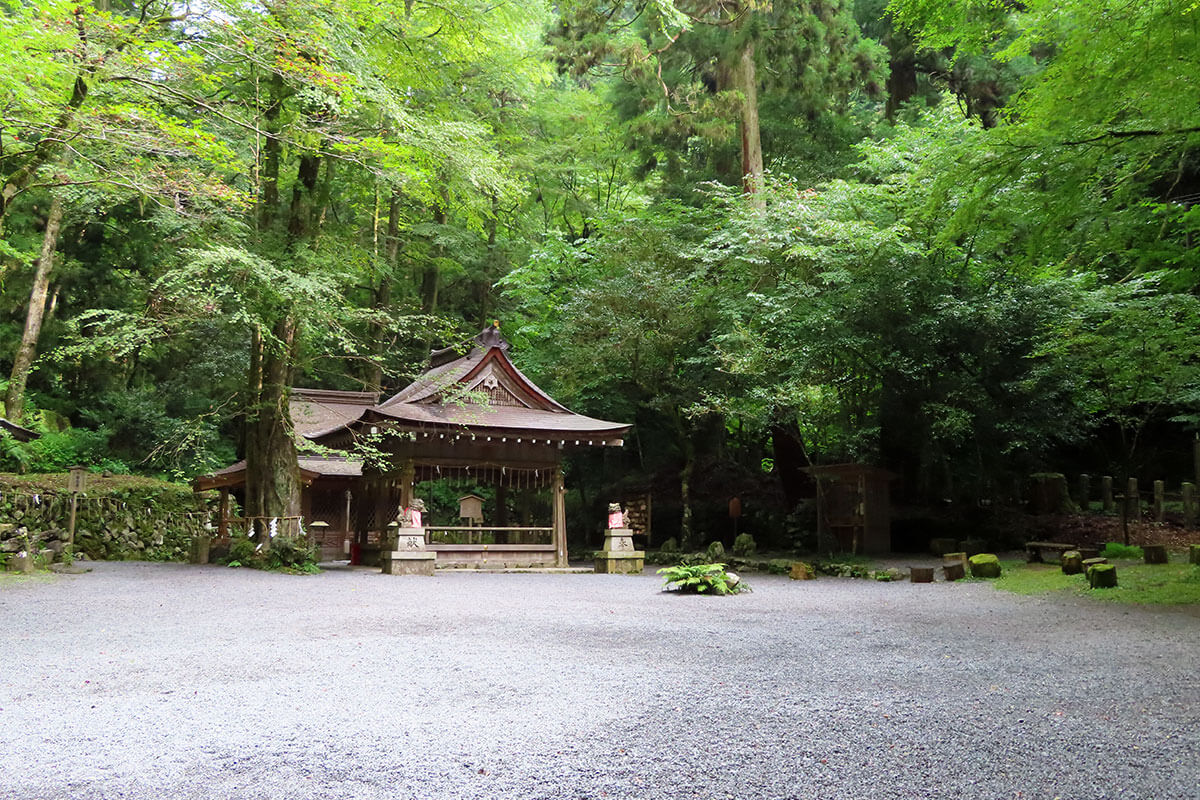
The inner shrine of Kibune Shrine
By the way, it is said that there is a "dragon hole" directly below the main shrine of Okumiya. The dragon hole is said to be a place where the air fills up and blows up, bringing prosperity. There is a story that during the Edo period, a chisel dropped by a carpenter repairing the shrine building was blown up by a gust of wind. There is also a funato-shaped stone near the shrine. In ancient times, Tamayohime-no-mikoto took a yellow boat in search of the source of water and traveled up the Yodo and Kamo Rivers to reach the upper reaches of the Kibune River, the headwaters of which are enshrined as a water goddess. Based on a legend, she wrapped the yellow boat in stones and hid it from public view.
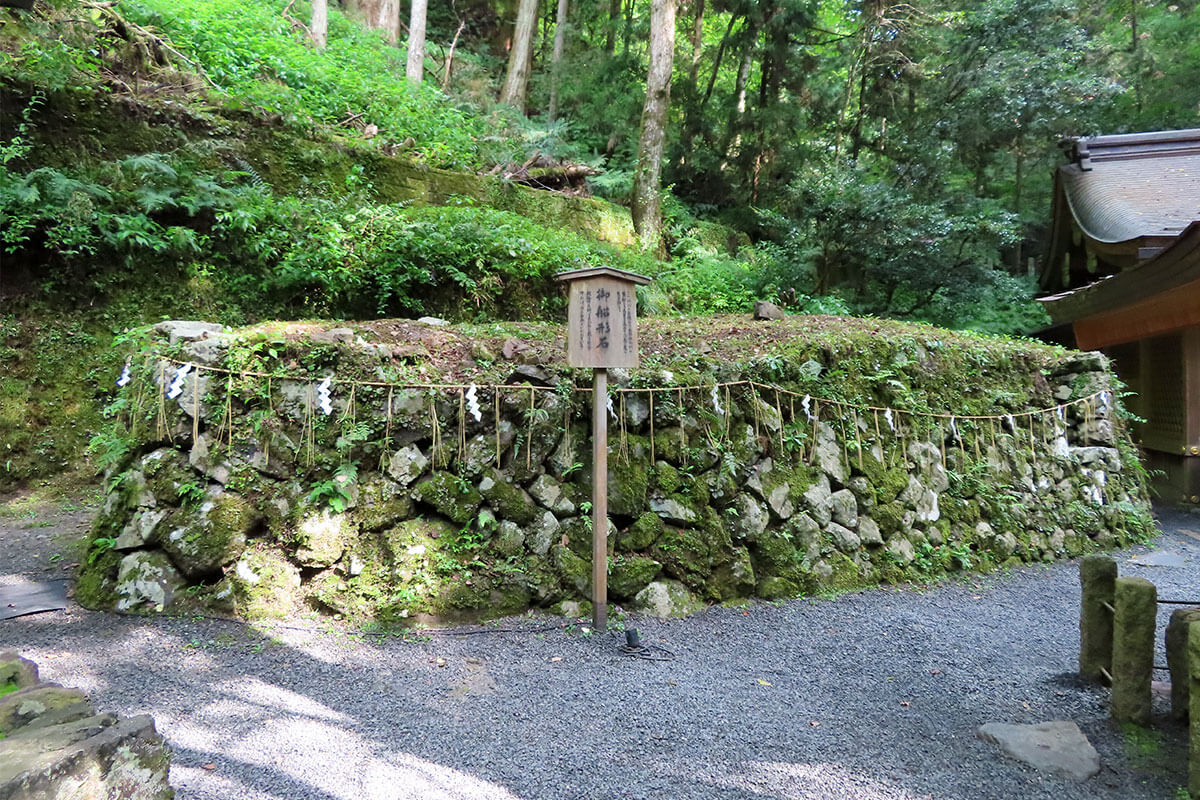
Onfunagata Stone at the Okumiya Shrine
In fact, it is said that it is best to visit the main shrine, then the inner shrine, and finally the kumisha in that order. They say to greet people at the main shrine, ask them to cut off bad connections at the inner shrine, and finally ask them to join good connections at the yusha. Next time, I will visit the shrines in that order. On the way back, I decided to walk back to Kibune-guchi instead of taking the bus. The fresh air, the pleasant sound of the water, and the good sweat gave me the power of the kisei root, and I felt refreshed all over my body, which had been feeling a bit tired from the summer heat. It was a visit to the shrine that reminded me once again that Kyoto is a city protected by mountains, water, and gods.
This issue marks the 100th entry in the "Kyoto no Māyāi Sankaku" series, and marks a milestone in the series. Thank you very much for reading this article.
Tradition that exists everywhere in the city of Kyoto. It is not just a picture, it is secretly alive in this modern age and continues to coexist with people. The two of Office TO, who previously wrote a series of articles "Kyoto's Demon World Exploration" in the monthly magazine Leaf, explore the mysterious "different" world of Kyoto, which was created over 1200 years. I will unravel the story while actually visiting the place. .
 News
News Feature article
Feature article Featured event
Featured event